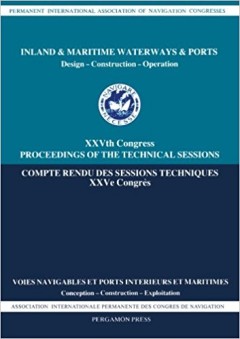Ditapis dengan

Research on public logistics centre as tool for cooperation
This paper focuses on logistics centre concept and benefits for users. Intermodal benefit, forwarders impact, IT solutions, new transport flows due to synergy, better supply chain management, additional services, cost sharing, economies of scale, quality of the services, know-how, joint marketing impact, and benefit for growth of third-party logistics services are presented. The main bottleneck…
- Edisi
- 2007, Vol XXII, No 1, 50–54
- ISBN/ISSN
- 1648-3480
- Deskripsi Fisik
- 6 p.
- Judul Seri
- Transport
- No. Panggil
- ATC LO JAR r

Counterbalancing peripherality and concentration: an analysis of the UK conta…
Over the last four decades, the UK container port system experienced a shift to and concentration in the southeast of the country, close to the English Channel. At the same time, traditional ports in the north and centre of the country have lost importance, despite overall container traffic growth. This paper analyses the evolution of container traffic at UK ports, mapping the patterns of conta…
- Edisi
- Vol. 40, No. 2, 116–132
- ISBN/ISSN
- -
- Deskripsi Fisik
- 19 p.
- Judul Seri
- Maritime Policy & Management: The flagship journal of international shipping and port research
- No. Panggil
- ATC LO WIL c

Concentration and load centre development in the European container port system
Only a few theories exist on the development of a container port system in relation to forelands, hinterlands and the technological environment. Moreover, very few were ever applied to the European container port system. This study examines recent dynamics - in particular, concentration and deconcentration tendencies and load centre development - in the European continental container port syste…
- Edisi
- -
- ISBN/ISSN
- -
- Deskripsi Fisik
- 18 p.
- Judul Seri
- -
- No. Panggil
- ATC PO NOT c

Inland & maritime waterways & ports
- Edisi
- -
- ISBN/ISSN
- 0-08-026750-5
- Deskripsi Fisik
- 249 p.
- Judul Seri
- -
- No. Panggil
- TXT PO WIL i
- Edisi
- -
- ISBN/ISSN
- 0-08-026750-5
- Deskripsi Fisik
- 249 p.
- Judul Seri
- -
- No. Panggil
- TXT PO WIL i

An analysis of market concentration in the Korean liner shipping industry
Korean shipping companies have seriously contemplated on pursuing economies of scale in order to tap the potential that Korea can generate for the seaborne cargo volume and fleet capacity, despite of latent pros and cons associated with the economies of scale. This paper shows the concentration ratio of the top four liner shipping companies in Korea is well below that of the global counterpart.…
- Edisi
- -
- ISBN/ISSN
- -
- Deskripsi Fisik
- 18 p.
- Judul Seri
- -
- No. Panggil
- ATC PO HAY a

Changing concentration ratios and geographical patterns of bulk ports: the ca…
Contrary to liner shipping, common shipping network patterns are difficult to organize in tramp shipping as origin and destination ports are irregular and they may change based on shippers’ demands. Unlike liner shipping whereas the choice of ports is strongly related to their geographical locations among other factors and a topic of much research in the contemporary literature, the geographi…
- Edisi
- Volume 30 number 2 August 2014
- ISBN/ISSN
- -
- Deskripsi Fisik
- 19 p.
- Judul Seri
- The asian journal of shipping and logistic
- No. Panggil
- ATC PO LEE c

Changing concentration ratios and geographical patterns of bulk ports : the c…
Contrary to liner shipping, common shipping network patterns are difficult to organize in tramp shipping as origin and destination ports are irregular and they may change based on shippers’ demands. Unlike liner shipping whereas the choice of ports is strongly related to their geographical locations among other factors and a topic of much research in the contemporary literature, the geographi…
- Edisi
- Volume 30 Number 2 August 2014
- ISBN/ISSN
- -
- Deskripsi Fisik
- 19 p.
- Judul Seri
- -
- No. Panggil
- ATC PO LEE c
 Karya Umum
Karya Umum  Filsafat
Filsafat  Agama
Agama  Ilmu-ilmu Sosial
Ilmu-ilmu Sosial  Bahasa
Bahasa  Ilmu-ilmu Murni
Ilmu-ilmu Murni  Ilmu-ilmu Terapan
Ilmu-ilmu Terapan  Kesenian, Hiburan, dan Olahraga
Kesenian, Hiburan, dan Olahraga  Kesusastraan
Kesusastraan  Geografi dan Sejarah
Geografi dan Sejarah